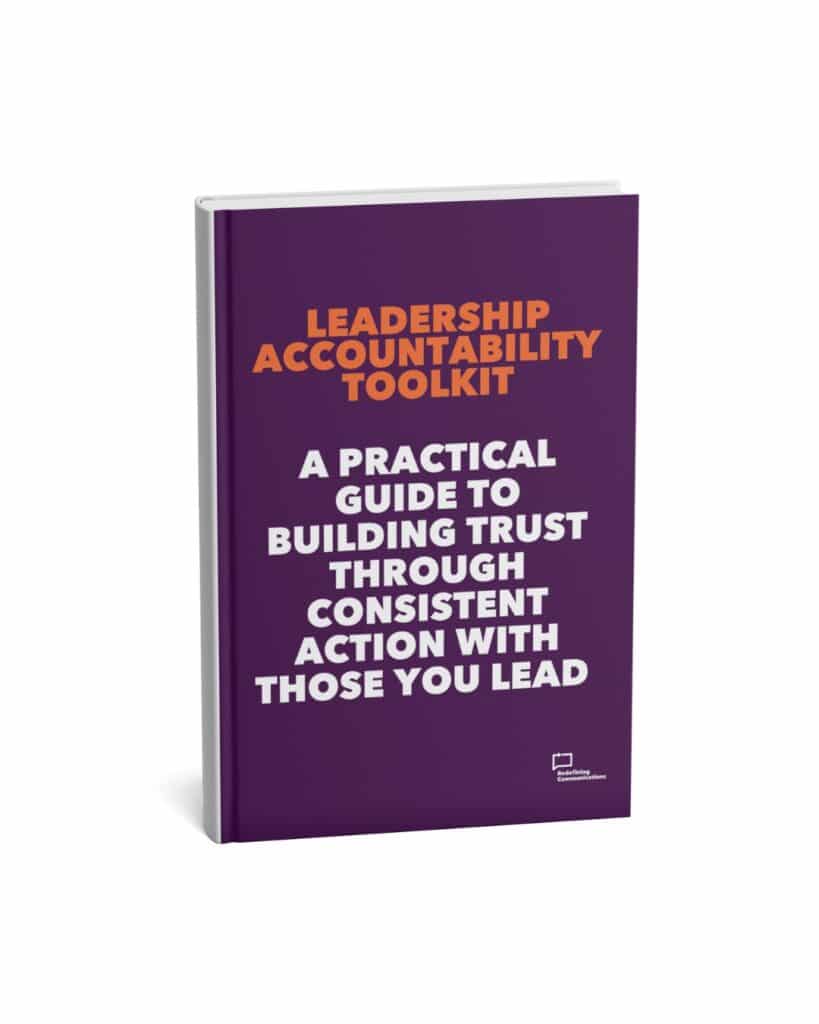Every day leaders are constantly dealing with challenges, change and an inevitable degree of daily firefighting. Striving to focus on the longer-term goals to survive, thrive and grow, as well as managing and motivating their team.
To do this, leaders need to be aligned and aware of what’s truly happening especially if they’re to understand the influences that cause organisational chaos and impact vital factors such as growth, productivity, engagement and communication.
In this blog, I talk through the themes that focus on how leaders lead their organisation. When we’re looking into overall leadership effectiveness, alignment and the success of any organisational transformation – whether from an HR, board or comms perspective – there are areas to investigate. We’ve identified seven themes to look at as a leadership team to explore where you are now, and how to move forward and make long-lasting changes where needed. These are accountability, adaptability, capability, communication, connection, strategy and velocity.
Accountability
This comes up time and time again and it’s about exploring how comfortable your leadership team is with being accountable. This isn’t about blame but it’s important to explore how people are held to account inside the organisation. And it links to leaders’ ability to make decisions and manage the consequences.
It’s worth thinking about whether leaders do the right thing, given the choice. Do they know what they need to do? Do they feel able to make mistakes, but also feel answerable for their actions? And are roles and responsibilities across the organisation clear? These are all key considerations when it comes to accountability.
Adaptability
Adaptability is about how your organisation and leadership team deal with change and failure. Do leaders embrace it or play it safe? Failure is a big topic to get comfortable with – but it’s important to look at how adaptable are you as a team. Ideally, leaders show an eagerness to try new things and a willingness to revise a strategy where the existing one isn’t delivering. So it’s worth looking at whether organisational transformation is welcomed or resisted. And if mistakes are made, how are the key learnings taken on board so that they aren’t repeated?
This is also about what innovation means within the leadership team and when they say they’ll try new things, or make changes whether that actually happens. If the scenario below described by Elvin Turner in Be Less Zombie is a regular occurrence, then innovation will likely stall at the first hurdle: “You leave the meeting feeling energised, only to be sucked into your inbox’s zombie tractor beam, and 28 days later you all find yourselves looking for excuses to postpone the meeting. Which you do. But when the momentum is lost, it rarely recovers.”
Being adaptable is a huge competitive advantage and it is leadership teams that drive this.
Capability
Do leaders have the collective skills, expertise, and alignment to get the job done well? If not, then identifying where the gaps are, particularly around communication skills, is essential. You can find out more about the skills we need to take us into the next era of comms and engagement in this blog. It’s worth considering if you need team workshops and training or individual coaching to fill those capability gaps.
Leaders need a well-resourced team to manage workload and it’s also useful to review factors such as talent sourcing, how performance issues are dealt with, and processes and systems.
Communication
As the lifeblood of the organisation this is a core component to explore. I discuss this in my book, Influential Internal Communication: “You cannot deliver strategy without people. The whole organisation has to come together, work together, to deliver the strategy. To work effectively, relationships and trust are needed, and these come from effective communication.”
Ultimately, this is about ensuring leaders are clear on the role they play in delivering on the strategy. That they have everything they need or want to know to do their jobs effectively. And that communication is clear and consistent. A desire to engage in conversation – not just one-way messaging – is essential. Is there a balance between listening and telling?
Connection
Connection and culture are topics I’ve been talking a lot about recently. It’s so important to understand how connected leadership teams are, but also how connected they are to the strategy and purpose of the organisation. A sense of belonging is key to connection, particularly after the impact of working from home when that wasn’t previously the norm.
If you’ve noticed a mismatch in values and the consistency in behaviour across your leadership team, it’s worth delving deeper. This sometimes happens when people feel they can’t make a positive difference or don’t have the freedom to make the choices and take the actions they need. It’s worth looking at whether the leadership team acts competitively or collaboratively, or if they know how engaged their teams are.
Strategy
Now is the time to bring your strategy back into focus and to check if leaders understand what they should be working towards. But it’s more than that. It’s whether they’re undertaking activity that supports the strategy and, vitally, how it manifests in the daily activities.
I always recommend looking at factors like how frequently strategy changes, whether leaders understand how they contribute to the strategy, if they agree the organisation is heading in the right direction and if they think the senior leadership team does too!
Making sure people in teams are working towards the strategy and that people know why they do what they do is always a factor that comes up to fix when we go through The Field Model with clients because making it relevant to the whole organisation is key to success. Having one in the first place is a must!
Velocity
This is all about how the organisation moves and the rate of change. It’s about how it’s shaped and how quickly it adapts to respond to external forces. If a leadership team is working well together then there should be a good pace of movement towards long-term goals.
Every company is different, but ideally, you’d see a healthy change in a constant direction, as opposed to erratic growth. On the other hand, you wouldn’t necessarily want to see changes in elements like processes too often, which might indicate change for change’s sake. Looking at the expected pace across different time frames (three months, a year, three years) is also useful. As this article details, “speed is a key organisational capability to achieve and sustain competitive advantage. While business leaders agree that their companies have a need for speed, they are unclear about the definition and the measurement of organisational speed.” It recommends looking at the speed of pivots, projects, people or profits as a good way of assessing velocity.
Gaining fast insights – what’s really happening in your leadership team?
We identified these seven themes during the process of developing our Leadership Alignment diagnostic Tool. We use this tool when we work with leaders and during The Field Model when appropriate. It’s a tool we development in partnership with SocialOptic.
Having noticed that companies of all shapes and sizes sometimes lack an element of transparency about what’s really going on inside their leadership teams, we wanted to create a tool that rapidly helps leadership teams refocus and drive organisational transformation.
It’s not a laborious process that takes months to work through, it’s four weeks from the initial phone call to the findings being shared. The Leadership Alignment Diagnostic Tool allows us to gather data for fast insights and create recommendations, with a plan to help organisations refocus with an outline of activities and clear timescales.
“The richness of the insight provided through the leadership alignment tool, coupled with deep expertise at the analysis and diagnostic stages, make for a very impressive report. It’s filled to the brim with solid insights and clear recommendations to effect positive cultural change in the organisation.”
Max Puller, Employee & Change Communications Director, Sodexo
If you’re looking to refocus your leadership team and move quickly through the fog, now is the time to invest in our Leadership Alignment Tool to help you do it at pace.
If you’d like to find out more, you can listen to this short podcast episode where I talk about the leadership skills and behaviours needed to avoid causing chaos in your organisation. Find out more about the Leadership Alignment Tool or get in touch to book a free 15-minute chat.








